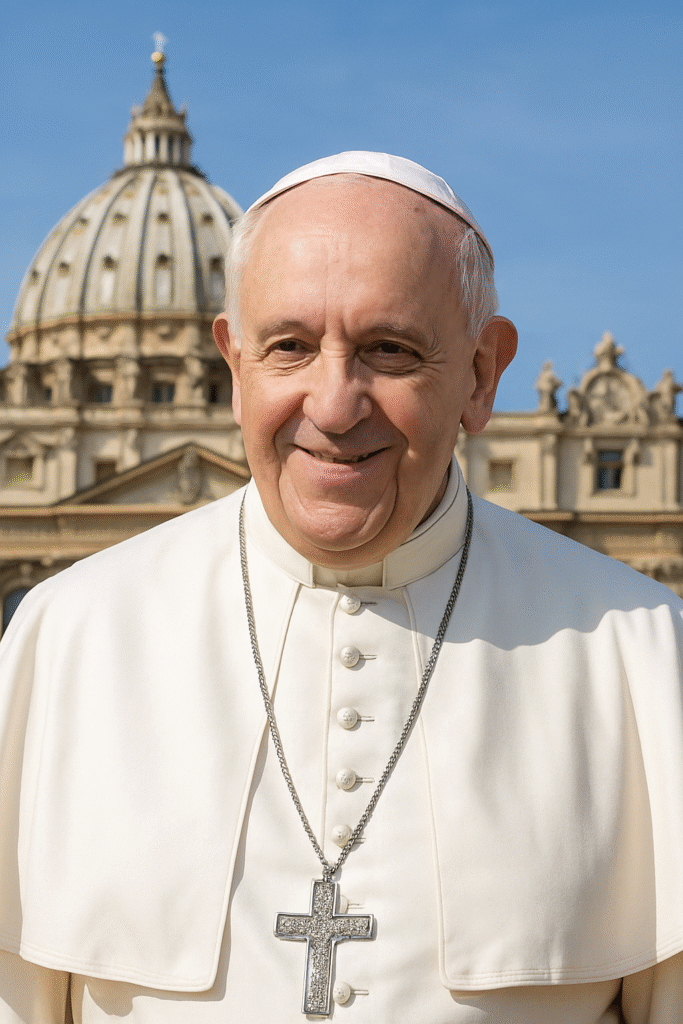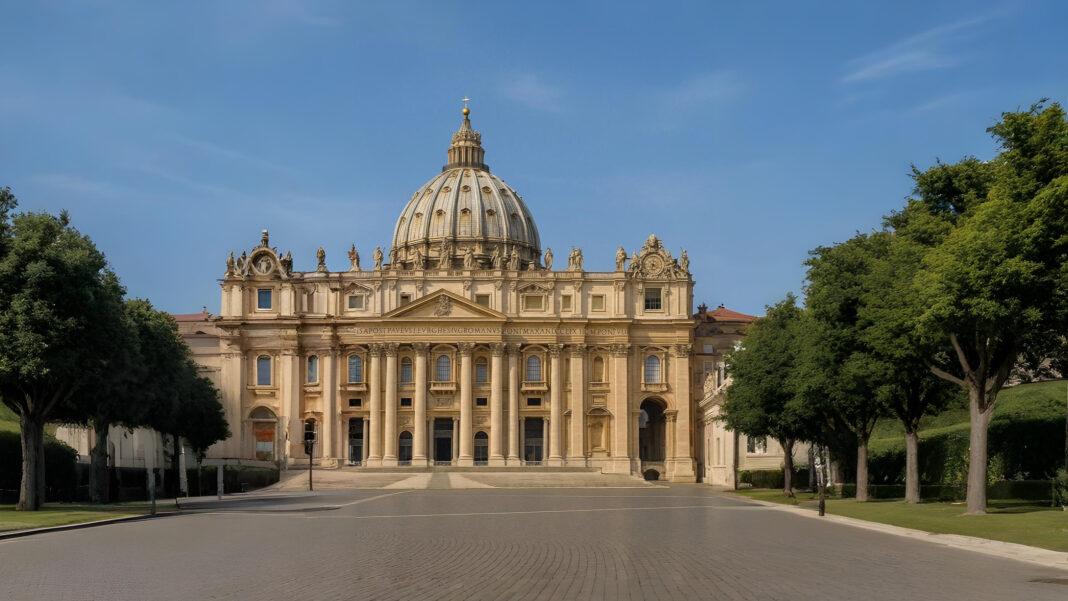Pope Francis, born Jorge Mario Bergoglio on December 17, 1936, in Buenos Aires, Argentina, changed the Roman Catholic Church. He was the first Pope from the Americas, the first from South America, and the first Jesuit Pope. This brought a new perspective to the papacy.

Elected on March 13, 2013, his time as Pope included major reforms and controversies. He was dedicated to social justice. He passed away on April 21, 2025, at age 88, due to a stroke and cardiac arrest. His death marked the end of a historic papacy. This article explores his life, achievements, and controversies. It also details the process of selecting his successor and offers insight into the future of the Vatican.
Contents
Biography of Pope Francis
Jorge Mario (Pope Francis) Bergoglio was born on December 17, 1936, in Buenos Aires, Argentina. His parents, Mario and Regina Bergoglio, were Italian immigrants. He was one of five children in a modest home. His father worked as an accountant, while his mother was a homemaker. Bergoglio initially pursued a technical degree as a chemical technician, showing an early interest in science.
However, at 21, a serious pneumonia led to the partial removal of his right lung. This experience strongly reinforced his spiritual calling. In 1958, he joined the Society of Jesus (Jesuits), starting a lifelong journey of service.
Bergoglio’s Jesuit training was demanding. He studied humanities in Chile and earned a philosophy degree from Colegio de San José in San Miguel, Argentina, in 1963. He later completed a theology degree at the same school from 1967 to 1970. He was ordained a priest on December 13, 1969, by Archbishop Ramón José Castellano. He taught literature and psychology at Jesuit schools, such as Colegio del Salvador in Buenos Aires. He showed strong leadership early on, serving as novice master and professor at the Faculty of Theology in San Miguel.
In 1973, Bergoglio became provincial superior of the Jesuits in Argentina, a role he held until 1979. This time coincided with Argentina’s military dictatorship (1976–1983), known as the “Dirty War.” His actions during this period have sparked both praise and debate. He is credited with sheltering people from persecution in church properties. He even gave his identity papers to a man who resembled him to help him escape. Critics have questioned his silence during the regime, but he later explained he worked discreetly to save lives, as noted in his authorized biography, El jesuita (Wikipedia).
Bergoglio’s ecclesiastical career grew when he was appointed titular Bishop of Auca and Auxiliary Bishop of Buenos Aires in 1992. He became Coadjutor Archbishop in 1997 and succeeded as Archbishop of Buenos Aires in 1998. Known for his humility, he lived in a simple apartment, cooked for himself, and used public transport. This earned him the affection of his diocese. In 2001, Pope John Paul II made him a cardinal with the title of San Roberto Bellarmino. From 2005 to 2011, he served as president of the Argentine Bishops’ Conference, strengthening his influence in Latin America.
Biographical Details
- Birth: December 17, 1936, Buenos Aires, Argentina
- Parents: Mario (accountant) and Regina Sivori (homemaker)
- Education: Chemical technician degree; philosophy and theology degrees from Colegio de San José
- Ordination: December 13, 1969
Key Roles
- Jesuit provincial (1973–1979)
- Archbishop of Buenos Aires (1998–2013)
- Cardinal (2001–2013)
Papacy and Key Events
Elected Pope on March 13, 2013, Jorge Mario Bergoglio chose the name Francis. He was inspired by Saint Francis of Assisi. This choice signaled his vision for a Church focused on the poor. His election was historic: he became the first Pope from the Americas, the first Jesuit, and the first non-European Pope in over a thousand years. From the start, Francis embraced humility. He chose to live in the Casa Santa Marta guesthouse instead of the papal apartments and wore simpler vestments (Vatican Biography).
Francis focused on social justice, caring for the environment, and interfaith dialogue during his papacy. His first encyclical, Lumen fidei (2013), completed a draft by Benedict XVI and explored faith’s role. His apostolic exhortation Evangelii Gaudium (2013) called for a joyful, missionary Church. Meanwhile, Laudato si’ (2015) addressed the climate crisis and urged global action for the environment. These documents showed his commitment to modern challenges while grounding his teachings in Catholic tradition (Britannica).
His pastoral gestures were also significant. Francis washed the feet of prisoners, including women and Muslims, on Holy Thursday, breaking tradition. He visited conflict zones like Iraq, the Holy Land, and South Sudan to advocate for peace. His 2013 visit to Lampedusa, Italy, highlighted migrants’ struggles, a recurring theme in his papacy. He also became the first Pope to address a joint session of the U.S. Congress and the United Nations General Assembly, enhancing his global influence.
Pope Francis worked to reform the Vatican by restructuring its financial institutions and promoting transparency. He appointed diverse bishops who shared his vision, diversifying the College of Cardinals. His apologies to survivors of clergy sexual abuse and new reporting guidelines were steps toward addressing this long-standing crisis. However, some felt more action was needed (Catholic News Agency).
Controversies and Incidents
Pope Francis’s progressive stance stirred major controversy, especially among traditionalist Catholics. His 2016 apostolic exhortation Amoris Laetitia hinted that divorced and remarried Catholics might receive Communion under certain conditions. This led to claims of doctrinal confusion. In 2025, he approved a Vatican document allowing priests to bless same-sex couples. He insisted that marriage is between a man and a woman. This decision angered conservative bishops who felt it went too far (The Independent).
The clergy sexual abuse scandal also sparked debate. Pope Francis met with survivors and made reforms. However, critics said he was slow to act against bishops accused of cover-ups. His decision to rehabilitate some accused priests drew even more scrutiny. Progressives and victims’ advocates expressed disappointment (Vox).
Pope Francis views on political matters also created tension. His critiques of capitalism, support for migrants, and calls for climate action pleased progressives. But conservatives, including former U.S. President Donald Trump, criticized him, especially over immigration policies. Within the Church, some cardinals opposed his reforms. They accused him of undermining tradition (Newsweek).
During Argentina’s “Dirty War,” questions about Bergoglio’s actions as Jesuit provincial arose. Some credited him with saving lives, while critics claimed he didn’t do enough against the dictatorship. Pope Francis later clarified that he worked discreetly to protect individuals. This was supported by former judge Alicia Oliveira and others (Wikipedia).
Key Controversies Same-Sex Blessings: Approved blessings for same-sex couples in 2025. This move sparked backlash from conservatives.
Clergy Abuse Scandal: He faced criticism for a slow response. However, he met with survivors and made reforms.
Political Stances: His critiques of capitalism and immigration drew political backlash.
Dirty War Allegations: Questions came up about his silence during Argentina’s dictatorship. He then showed proof of discreet aid.
Death of Pope Francis
Pope Francis died on April 21, 2025, at age 88, in his residence at Casa Santa Marta in the Vatican. The Vatican announced his death was due to a stroke and cardiac arrest after a long hospital stay for severe respiratory infection, diagnosed as bilateral pneumonia.
Pope Francis health had been weak, with a history of respiratory problems from lung surgery in his 20s. Just a day before he died, he blessed the faithful in St. Peter’s Square, showing his dedication despite his frailty. Francis requested a simple burial at the Basilica of Santa Maria Maggiore in Rome, reflecting his lifelong humility (Vatican News).
Tributes came in from around the world. Italian Prime Minister Giorgia Meloni called him a “great shepherd.” Argentine President Javier Milei, despite past tensions, also mourned his loss. In Buenos Aires, mourners gathered at the Metropolitan Cathedral to honor their compatriot, whose empathy touched millions (Reuters).
Must Read: The Waqf Board Amendment Act 2025: A Controversial Change in India’s Religious Property Management
Process of Choosing a New Pope
The death of a Pope Francis leads to a period called “sede vacante” (vacant seat). During this time, the College of Cardinals governs the Church. The election of a new Pope is known as a conclave. This tradition is rooted in secrecy and ritual. The word “conclave” comes from the Latin “cum clave” (with key). It refers to the locked seclusion of cardinals to avoid outside influence (The Guardian).
The conclave starts 15 to 20 days after the Pope’s death. This period allows for mourning, funeral rites, and the arrival of cardinals from around the world. Only cardinals under 80 can vote. These cardinal electors number about 135, though the limit is usually 120. The process begins with general congregations, where cardinals discuss the Church’s challenges and prepare for the election.
In the Sistine Chapel, cardinals take an oath of secrecy and vote anonymously. They write their chosen candidate’s name on a ballot. Voting occurs in four rounds each day, needing a two-thirds majority to elect a new Pope. After each round, the ballots are burned. Chemicals produce black smoke to show no decision was made or white smoke to announce a new Pope. The elected candidate is asked if he accepts the role and what name he will take. He then appears on the balcony of St. Peter’s Basilica to deliver his first blessing (USCCB).
Conclave Process Details Eligibility: Cardinals under 80 (approx. 135 electors).
Voting: Secret ballots, two-thirds majority required.
Signaling: Black smoke (no decision), white smoke (new Pope elected).
Timing: Begins 15–20 days after the Pope’s death, lasts until election.
Possible New Pope
The election of Pope Francis successor is uncertain. There is no clear frontrunner, which mirrors the surprise of Francis’s own election in 2013. He appointed over 110 current cardinal electors, shaping a College of Cardinals that reflects his inclusive vision. Potential candidates include:
- Cardinal Pierbattista Pizzaballa (60, Italy), Latin Patriarch of Jerusalem, is known for his diplomatic work in the Middle East and interfaith dialogue. His experience in conflict zones makes him a strong candidate for a Church facing global tensions (NY Times).
- Cardinal Matteo Zuppi (Italy), Archbishop of Bologna, is recognized for peace initiatives, including efforts in Ukraine. His pastoral approach aligns with Francis’s focus on mercy and social justice (Sky News).
- Cardinal Luis Antonio Tagle (Philippines), Archbishop of Manila, is noted for his evangelization efforts and pastoral care. His Asian perspective could bring a fresh voice to the papacy (The Guardian).
- Cardinal Peter Erdo (Hungary), Archbishop of Esztergom-Budapest, is a respected theologian with experience in European Church leadership. His traditionalist views may appeal to conservatives (Sky News).
- Cardinal Juan José Omella (Spain), Archbishop of Barcelona, embodies Francis’s focus on social justice and humility. His modest nature makes him a “continuity” candidate (Reuters).
Other names include Cardinal Pietro Parolin, the Vatican’s Secretary of State, known for his diplomatic skills, and Cardinal Mykola Bychok (Ukraine), a younger candidate experienced with war refugees. The choice will depend on whether cardinals want to continue Francis’s reforms or shift to a more conservative direction. This comes amid challenges like declining influence in Europe and growth in the Global South (Newsweek).
Conclusion
Pope Francis’s legacy brings significant change. He is known for his humility and support for the marginalized. He also worked to modernize the Catholic Church. His papacy challenged traditions, pushing for environmental awareness and interfaith dialogue. However, it also stirred up controversies, exposing divisions within the Church. His death on April 21, 2025, marks a new beginning.
The conclave will choose a successor to guide the Church through this pivotal time. As the world watches the Sistine Chapel’s chimney for white smoke, the Catholic faithful reflect on Francis’s lasting influence. They look forward to the new leadership that will shape the Church’s future.



